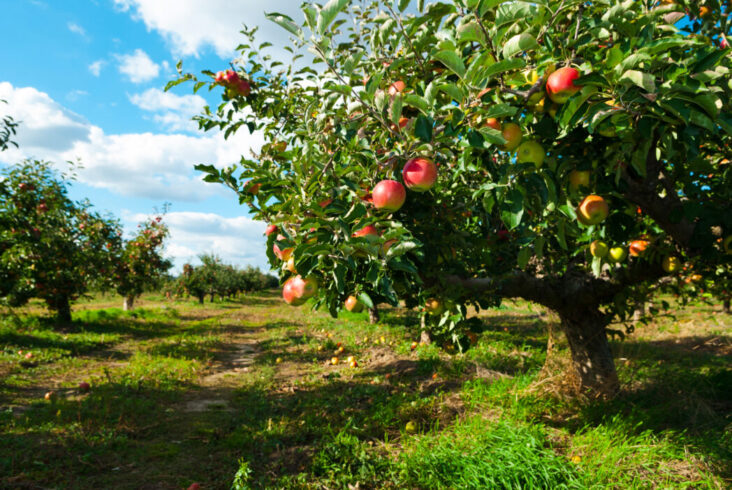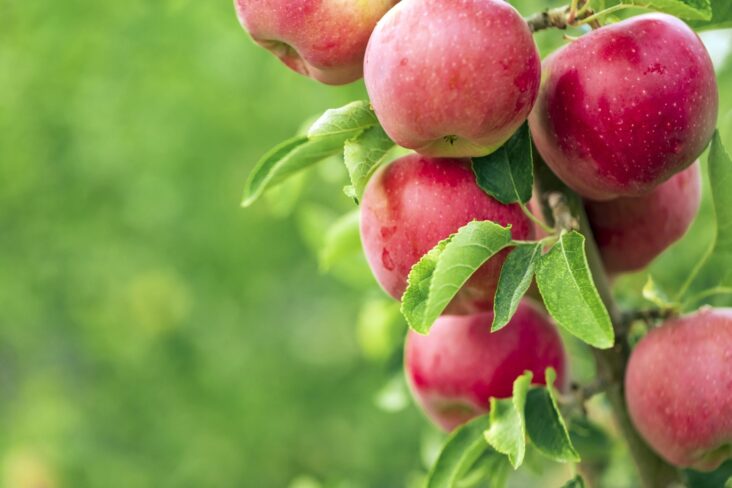Apple trees, with their lush green leaves, fragrant blossoms, and promise of a bountiful harvest, have always been a symbol of growth and prosperity in the horticultural world. They hold a special place in the hearts of gardeners and orchard enthusiasts, and for good reason.
Whether you are a seasoned apple tree fanatic or a novice looking to start your own orchard, understanding the vast range of apple tree varieties and mastering the art of cultivation is key to a successful and rewarding experience.
Before delving into the specifics of apple trees, it’s important to note the versatility of fruit-bearing plants like blackberry bushes. These can complement your apple trees in a garden setting, especially when considering companion planting or expanding your fruit-bearing plant assortment.
Understanding Apple Trees: Essential Care and Cultivation

Apple trees are an excellent choice for any garden, with specific care needs to ensure healthy growth and abundant fruiting. They prefer well-drained, loamy soil that’s rich in organic matter. Full sun exposure, with at least six hours of direct sunlight daily, is essential for optimal growth and fruit production.
Proper spacing is important to ensure good air circulation, which helps prevent diseases. Pruning is crucial for apple trees, ideally during late winter or early spring when the trees are dormant.
This involves removing dead or diseased branches and thinning out crowded areas to promote better light penetration and airflow, which in turn encourages healthier growth and fruiting. Consistent watering, particularly during dry periods, is vital for young trees and during fruit development.
Mulching helps retain soil moisture and suppress weeds. Additionally, monitoring for pests and diseases and taking appropriate action are key to maintaining healthy apple trees.
The Wide Array of Apple Tree Varieties
Apple trees come in a multitude of varieties, each with its unique characteristics and flavors, catering to a diverse range of tastes and preferences.
Classic British Varieties: This category includes traditional British apples such as the tart Bramley, perfect for baking; the aromatic and sweet Cox’s Orange Pippin; and the nutty-flavored Egremont Russet. These varieties encapsulate the essence of British orchards and are excellent for fresh eating and culinary creations.
Modern Favorites: For those who prefer contemporary apple varieties, there are options like the sweet and crisp Gala, a family favorite; the versatile and balanced Braeburn, great for both fresh consumption and cooking; and the juicy Fuji, originating from Japan, known for its delightful sweetness.
Heritage Treasures: Orchard enthusiasts who cherish history can opt for heritage varieties like the Worcester Pearmain with its strawberry-like flavor, the complex and nutty Ashmead’s Kernel, or the rich, aromatic Ribston Pippin, a historical variety with a unique taste.
Dwarf Apple Trees: Ideal for small spaces, dwarf apple trees like the Pixie Crunch, Red Windsor, and Scrumptious offer full-sized fruits without requiring a large area. These are perfect for urban gardens or patios and require minimal pruning.
Expert Tips for Apple Tree Cultivation

Success in growing apple trees comes from understanding and implementing expert cultivation techniques:
Selecting the Right Location: Apple trees thrive in sunny, well-drained spots with good air circulation, which is crucial to prevent diseases.
Proper Pruning: This is essential for maintaining a healthy tree structure and promoting fruit production. Prune during the dormant season to reduce stress on the tree.
Ensuring Effective Pollination: Plant at least two compatible apple tree varieties for cross-pollination or opt for self-fertile varieties to ensure good fruit set.
Managing Pests and Diseases: Be vigilant for common pests like aphids and apple maggots, and use organic methods for control.
Balanced Fertilization: Apply a slow-release fertilizer with the right balance of nutrients for apple trees.
Consistent Watering: Regular watering, particularly during dry spells, is key to preventing fruit drop and maintaining tree health.
Timely Harvesting: Harvest apples based on indicators like color change, firmness, and flavor. Each variety has its own ripening time.
In conclusion, the world of apple trees offers a rich and varied selection of varieties to suit every taste and need. From the traditional British favorites to modern varieties, heritage treasures, and dwarf options for smaller spaces, there’s an apple tree for every gardener and orchardist.
Armed with expert tips on cultivation and care, you can embark on a successful apple tree cultivation journey, enjoying the delightful fruits of your labor. Embrace the joy of growing apple trees and join the ranks of apple tree fanatics worldwide. Happy gardening!

